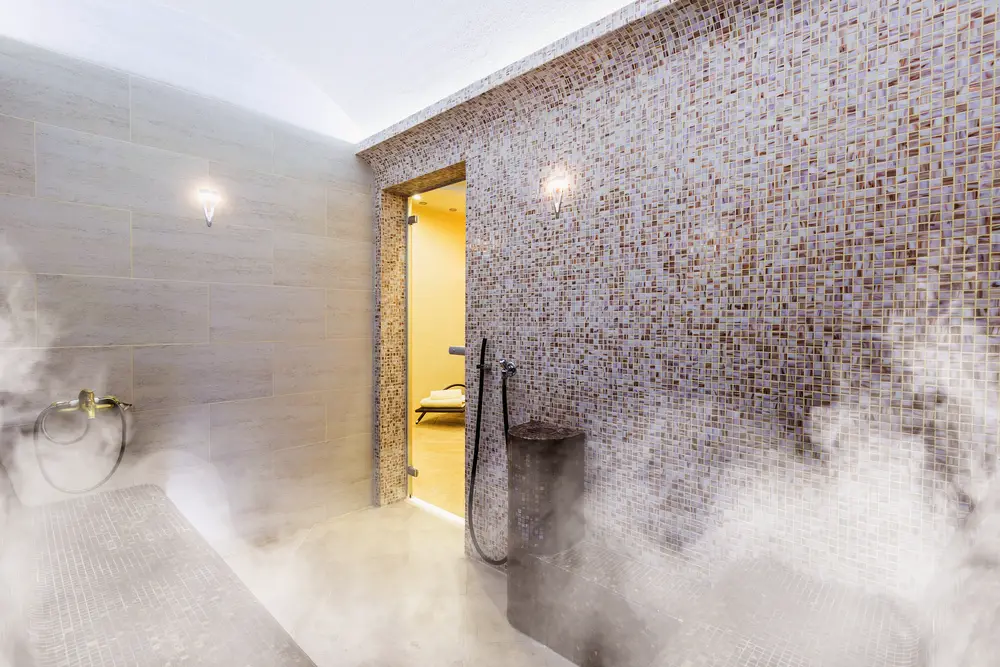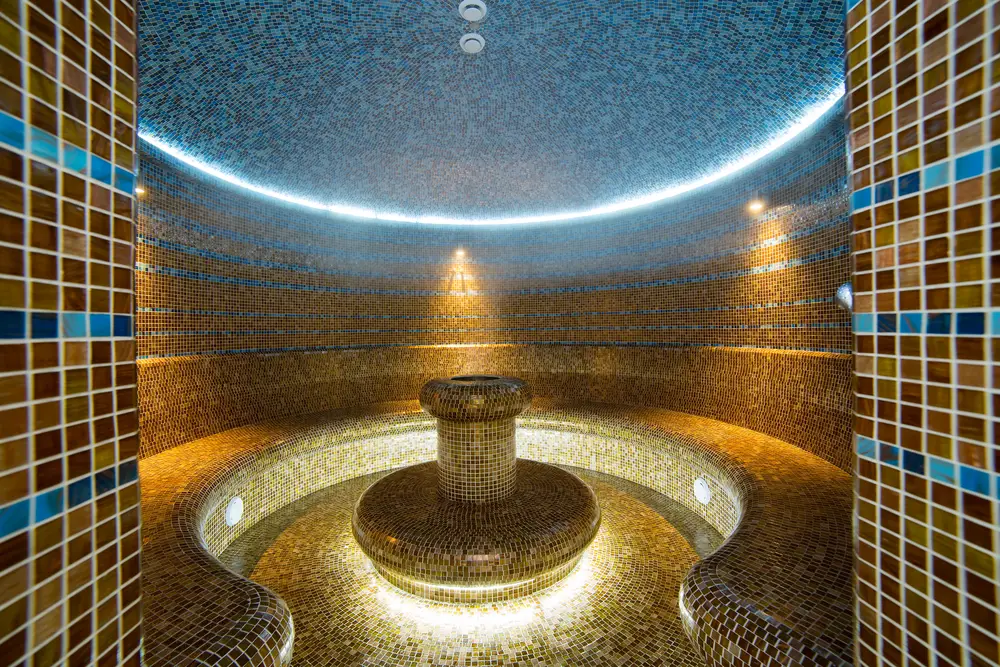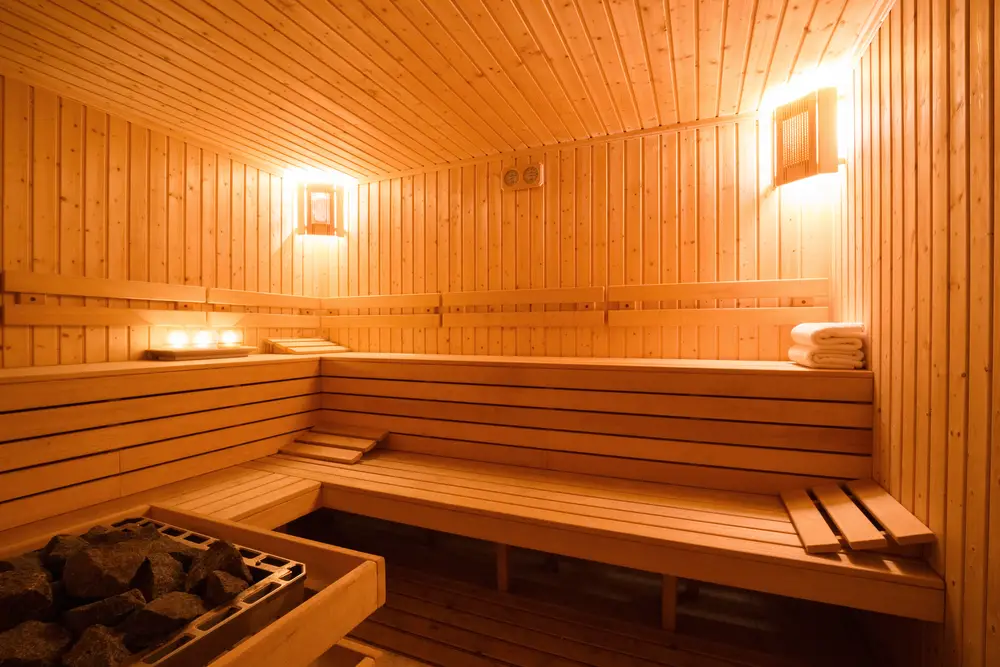You are not alone in pondering the temperature of saunas and steam rooms. Understanding the temperature ranges of these two popular relaxation techniques is essential for maximizing their advantages.
The standard temperature range for saunas is between 150 and 195 degrees Fahrenheit (65 and 90 degrees Celsius), while steam rooms are often maintained between 110 and 114 degrees Fahrenheit (43 and 45 degrees Celsius) with 100% humidity. In contrast to saunas, steam rooms provide moist heat.
Want to know the range of temperatures for saunas and steam rooms? Continue reading to learn more.

What health benefits do saunas and steam rooms offer?
This article intends to provide an overview of the normal temperature ranges for saunas and steam rooms, as well as the benefits of varying temperatures in each. In addition, it compares and analyzes the benefits of saunas and steam rooms, as well as their similarities and differences.
The purpose of this article is to educate readers about the advantages of saunas and steam rooms as well as the possible temperature ranges. It also provides guidance on how to determine the optimal temperature based on a person’s tastes and health requirements.
Both steam rooms and saunas, which are widely utilized for relaxation, offer numerous health benefits. In a sauna, people can sit or lie down while being exposed to dry or moist heat in a small chamber or cabin.
Saunas are commonly found in health clubs and spas, and they are typically heated by wood or electricity. In contrast, steam rooms are enclosed environments commonly found in spas and certain gyms. Using heat and water, steam rooms produce and allow the user to control the amount of steam.
Both saunas and steam rooms have been utilized for millennia due to their health benefits, making them a great way to unwind after a workout or a hard day.
It is essential to remember that everyone has different preferences for temperatures and humidity levels, so it is best to begin with a lower setting and gradually increase it until you find a comfortable temperature.
How does temperature management affect the sauna’s health benefits?

Typical sauna temperatures range from 150 to 195 degrees Fahrenheit (65 and 90 degrees Celsius). By adjusting the temperature of the stove or heater, the user’s preferences can be accommodated by this range.
Gas, wood-burning, or electric heaters may be utilized to generate the sauna’s heat. The temperature can be modified by adjusting the heat of the fire or heater, the amount of water added to the rocks, and the airflow through the sauna.
Various sauna temperatures offer distinct health benefits. Lower temperatures, around 150–160°F (65–71°C), are regarded as gentle and are suitable for individuals who are new to saunas or have medical conditions that make them heat-sensitive. Even at these temperatures, relaxation and circulation are enhanced.
Higher temperatures, between 180 and 195 degrees Fahrenheit (82 and 90 degrees Celsius), are reported to be more intense and suited for individuals who are more accustomed to saunas or who need a more stimulating experience. At these temperatures, you are more likely to experience profuse perspiration, which can aid in body detoxification and improve skin health.
It is important to note that different people prefer different temperatures and levels of humidity, and it is always best to begin with a lower temperature and gradually increase it until you reach a comfortable level.
Before utilizing a sauna, it is also advisable to consult a physician if you have any health difficulties or are pregnant.
Also Read: Sauna Maintenance and Cleaning
What effect does temperature control have on the advantages of using a steam room?

Typical steam rooms feature 100% humidity and a temperature range of 110–114°F (43–45°C). A steam room’s temperature can be altered by adjusting the amount of water given to the steam generator, which affects the amount of steam generated.
By adjusting the amount of water given to the steam generator, it is also possible to control the humidity.
Different temperatures in a steam room provide distinct health benefits. Lower temperatures, between 110 and 115 degrees Fahrenheit (43 and 46 degrees Celsius), are regarded as moderate and appropriate for individuals who are new to steam rooms or have medical conditions that make them heat-sensitive. These temperatures are still effective for promoting rest and improving circulation.
Higher temperatures, around 114–118°F (46–48°C), are said to be more intense and are suitable for individuals who are accustomed to steam rooms or who desire a more stimulating experience.
At these temperatures, you are more likely to experience profuse perspiration, which can aid in body detoxification and improve skin health.
Keep in mind that different people prefer different temperatures and humidity levels, so it’s best to begin with a lower temperature and gradually increase it until you find a setting that makes you feel comfortable.
Additionally, if you have a specific medical problem or are pregnant, you should consult a physician before to using a steam room.
What are the most significant distinctions between saunas and steam rooms?
Saunas and steam rooms are both frequently used for relaxation and offer a variety of health benefits. The utilization of heat as a tactic for inducing relaxation and increasing circulation is the common denominator.
Despite the fact that all operations require heat, it is essential to recognize that their temperature ranges and heating strategies are various.
One of the most significant distinctions between saunas and steam rooms is the sort of heat employed. Saunas employ dry heat, which has the potential for greater intensity and deeper perspiration. This type of heat is helpful for skin health and body detoxification.
In comparison, steam rooms utilize less strong and more calming wet heat. This form of heat can create a more pleasurable sensation and be useful for relaxation and stress reduction.
By utilizing both saunas and steam rooms, more health benefits can be obtained.
By rotating between the two, you can gain benefits such as enhanced circulation, relaxation, reduced tension, and detoxification. If you have a specific medical condition or are pregnant, however, you must consult a doctor before utilizing a sauna or steam room. This will ensure that the temperature and humidity fit your particular specifications.
What temperature settings and recommendations are advised for saunas and steam rooms?

In this article, we discussed the typical temperature ranges for saunas and steam rooms, as well as the benefits of varying temperature settings in each.
The benefits of using both saunas and steam rooms, as well as their parallels and differences, were also explored. In conclusion, the standard temperature range for saunas is between 150 and 195 degrees Fahrenheit (65 and 90 degrees Celsius), which can be adjusted to the user’s liking by increasing the stove or heater’s heat.
Typical steam rooms have a temperature range of 110°F to 114°F (43°C to 45°C) with a humidity level of 100%. In steam rooms, wet heat is utilized, whereas dry heat is utilized in saunas.
When determining the optimal temperature for saunas and steam rooms, it is essential to take individual tastes and health concerns into account.
To find a temperature that is most comfortable for you, it is always best to begin with a lower setting and gradually increase it. Before using a sauna or steam room, you should also consult a doctor if you have any health difficulties or are pregnant.
There are numerous online and print sites for additional information on saunas and steam rooms. On websites such as MayoClinic.org and WebMD.com, you may find extensive information on the benefits and risks of saunas and steam rooms.
There are further works that focus on the history, advantages, and applications of saunas and steam rooms. Additionally, if you have questions or concerns, you should consult a licensed sauna or steam room professional.
Summary – Maximum and Average Temperatures for Saunas and Steam Rooms
- Sauna temperatures typically range between 150 and 195 degrees Fahrenheit (65 and 90 degrees Celsius). Steam rooms are typically maintained at a temperature range of 110 to 114 degrees Fahrenheit (43 to 45 degrees Celsius) with 100 percent humidity.
- In contrast to saunas, steam rooms employ humid heat.
- When selecting a temperature for saunas and steam rooms, it is crucial to consider personal preferences and medical considerations.
- Start with a lower temperature and increase it gradually until you reach the optimal level of comfort.
- If you have a medical condition or are pregnant, consult a physician prior to using a sauna or steam room.
